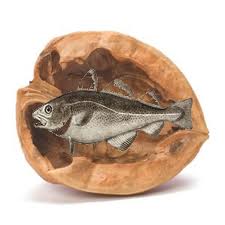Pushing high flows of water through a small pipe wastes both energy and money. It can also cause corrosion and shorten the life of the pipe.
Water flowing through a pipe does not flow uniformly from edge to edge. Water in a pipe flows like water in a river, with water in the middle flowing much faster than water at the edges. Flow is fast at mid stream, and the water against the wall of the pipe is scarcely moving.
As water pressure pushing the flow increases, flow within the pipe becomes more turbulent and “thinner.” By thinner we mean that there is rapid flow at the center of the pipe but the areas of relatively low flow extend further out from the walls of the pipe.
Flow with high turbulence requires far more energy than smooth flow. Thus, to double the flow rate in a pipe by increasing pressure, it takes four times as much energy.Therefore, it is important to limit linear flow when designing a piping system.
There is a general rule that says flow through a pipe should be no more than 8 to 10 linear feet per second.
There is a measurement used in pipe and water filter design called “Delta P.” In general terms, Delta pressure, or delta P, most commonly refers to the difference in pressure before and after a fluid filter (oil, hydraulic, or fuel) which indicates when the filter is clogged. Most aircraft have “Delta P” indicators to show this condition. With water filters a pressure gauge is sometimes mounted in front of a filter and another after. The difference between the readings of the two gauges indicates the delta P. If the filter is clean, the gauges should read nearly the same, but as the filter takes on contaminants, the difference between the inlet and the outlet gauges, the delta P, increases.
There is a common misconception that pipe capacities increase in direct proportion to the stated size, i.e. that a 2” pipe has twice the carrying capacity of a 1” pipe, and that, therefore, two 1” pipes side by side would have the same fluid carrying capacity as a single 2” pipe. This is not so. A 2″ pipe actually has the carrying capacity of four 1″ pipes. The rule of thumb is twice the diameter equals four times the flow. See How Many 1″ Pipes Will Fit Into a 2″ Pipe?
Without getting too technical, consider these examples of how delta P works:
If you put 10 gallons of water per minute through 100 feet of 1” irrigation pipe, the pressure at the end of the pipe will be 15 psi less than the pressure at the input end. That’s a delta P of 15 psi per 100 feet of pipe.
If you put 10 gallons of water per minute through 100 feet of ¾” irrigation pipe, the pressure at the end of the pipe will be 20 psi less than the pressure at the input end. That’s a delta P of 20 psi per 100 feet of pipe.
If you put the same 10 gallons of water per minute through 100 feet of 1/2” irrigation pipe, the pressure at the end of the pipe will be 35 psi less than the pressure at the input end. That’s a delta P of 35 psi per 100 feet of pipe.
Another example:
Water flowing through 10 foot section of 4” pipe at the rate of 10 feet per second will put out 400 gallons per minute.
Water flowing through a 10 foot section of 2” pipe at the rate of 10 feet per second will put out 100 gallons per minute.
Water flowing through a ten foot section of 1” pipe at the rate of 10 feet per second will put out 25 gallons per minute.
Therefore, a 2″ pipe is much larger than double the size of a 1″ pipe when it comes to flow and pressure performance.
Indebted to a Water Conditioning and Purification article, February 2013, paper issue, by Chubb Michaud, and to Ryan Lessing and Pure Water Annie, via the article cited above.





